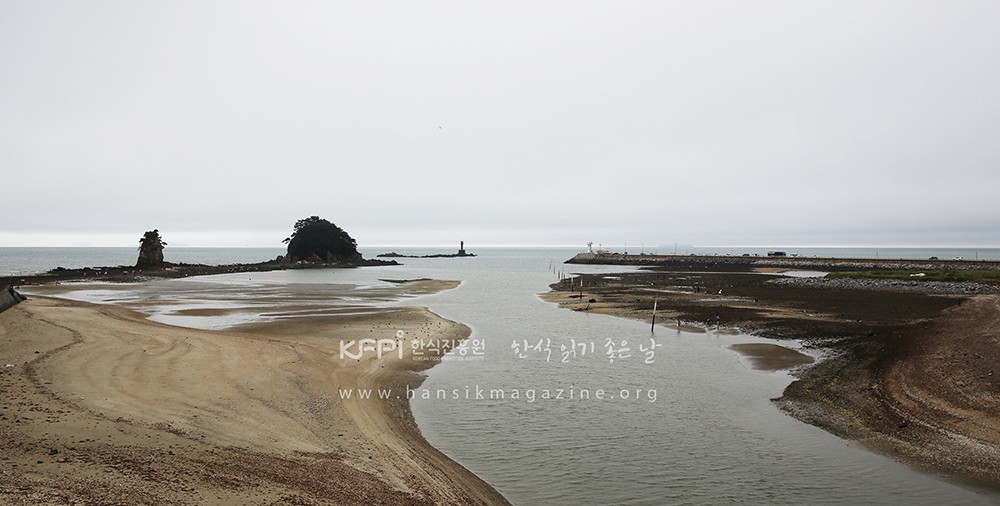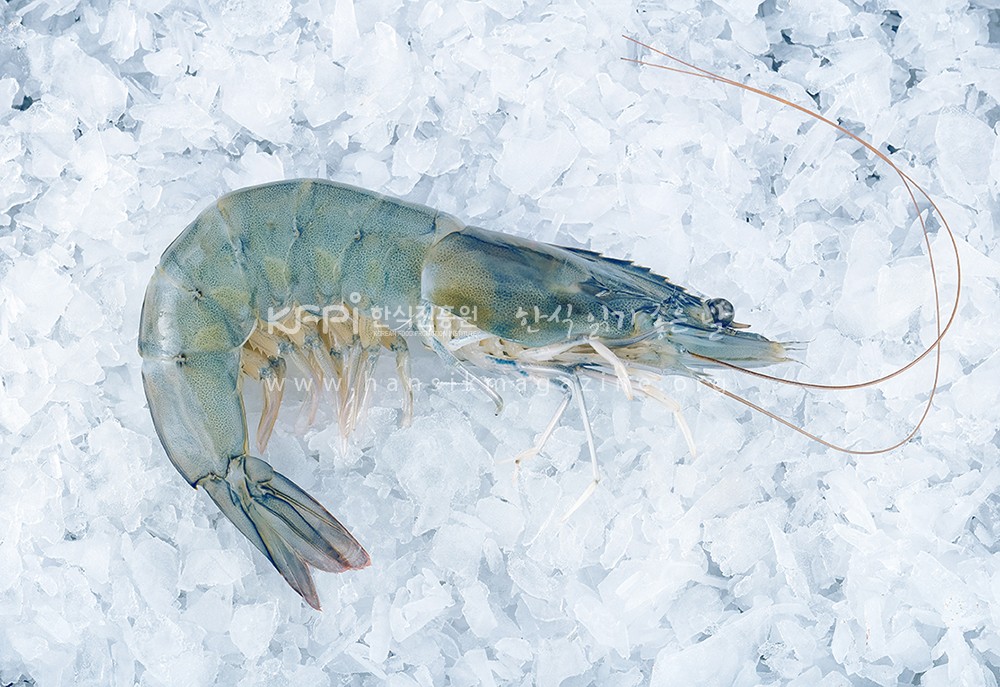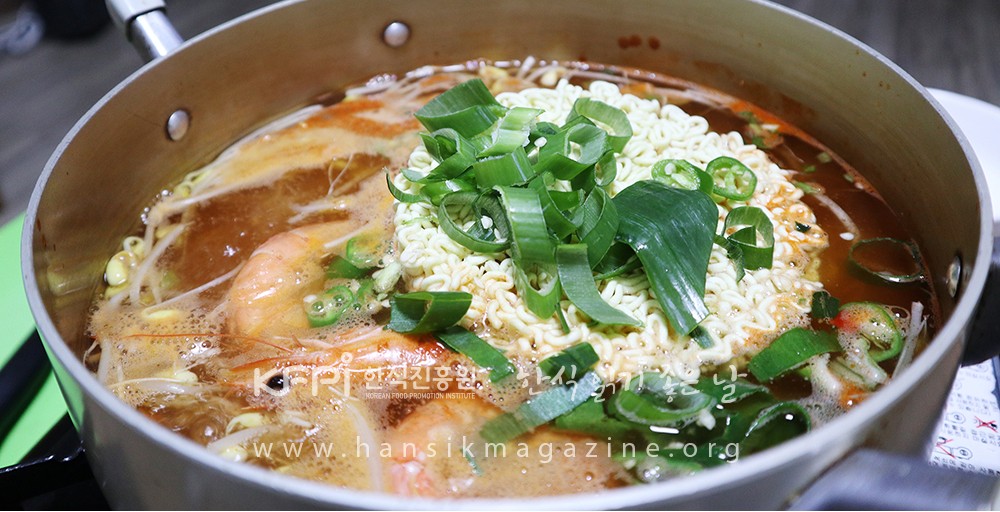한식 읽기 좋은 날
Vol 32. Daeha - Chungcheong
Anmyeon-do Daeha in autumn, a taste that will make you sad if you don’t eat
Gourmet travel for regional food ingredients
Hansik glossary
Daeha - Prawn
When it comes to suggest the seasonal seafood in September,
gizzard and Daeha can't be omitted.It is time to good to eat Daeha at home even if the festival
was cancelled due to Covid-19.

Taean where autumn foods are abundant, among them, the best is the sea of Anmyeon-do ⓒ Choi Hongdae
I always used to visit the restaurant to eat gizzard or Daeha(prawn) harvested in autumn around this time but I am accustomed to cook food at home now. I think it is not bad to have a more happy everyday life eating seasonal seafood with the person who can stay with me. This summer with exceptional heat ends, enjoying the cool wind in every morning and evening, I bought daeha which is said to be more delicious at cheoseo(the seaseon when the intense heat wave began to recede). Above all, you should be diligent to enjoy seasonal food ingredients without missing them. When I eat salt roasted daeha feeling the change of season, I think my body and soul exhausted due to scorching heat are revived.
It has been not long since many people started to eat daeha in Korea, but daeha has been referred many times in history. According to <Bonchogangmok> a medical book in Ming Dynasty in China, "Daeha strengthens kidney to boost the spirit". According to another literature <Donggukyeojiseungram>, daeha was introduced to be a local product in 5 western dos including Gyeonggi, Chungchung, Jeolla, Hwanghae, Pyungan. According to <Jasaneobo> said "Daeha has white or red color, the size of white one is 2 chi(1 chi is equivalent with about 3cm), the size of purple one reaches 5 ~6 inches. According to <Nanhoeomokgi>," The red one with the length of 1 ja is called daeha which can be cooked as heo(sliced raw fish), soup and side dish by drying it.
Taean, a home of daeha
among them, Anmyeon-do daeha is the best one.
Anmyeondo with the name Anmyeon 安眠, meaning that the tide can lie down and relax, is the sixth largest island in Korea, Like the name of relaxing comfortably, Anmyeondo is characterized by its low terrain and calm, so visited by many people who come to catch shellfish whenever the water runs out. There are also many beaches with good scenery, but there are also many ports. The seafood that represents the autumn food in Anmyeon-do is the daeha that is produced from the peak summer to autumn. When it comes to daeha, you might think of Taean, especially Anmyeon-do, because daeha produced here account for 80% of the catch of daeha in Chungnam.
Passing the Anmyeon Bridge connecting Anmyeon Island and Taean, which stretches north and south with a length of 24 kilometers, and east and west with a length of 5.5 kilometers, you will reach the first port, Baeksajanghang Port. In Baeksajanghang Port greeting autumn, about 10 fishing boats are said to be catching daeha an average of 1 ton per day. Although it varies from day to day in the production site, you can taste daeha for between 30,000 won and 40,000 won per kilogram.
How to distinguish Daeha from White Shrimp
The shrimp of which name originated from old word 'Sarida' in some region, its kinds include 90 types such as dohwasaeu, borisaewu, daeha, jungha, ggotsaewu and Dokdosaeu. Among them, daeha is a shrimp belonging to the borisaeu family, also called wangsaeu. As the name suggests, the difference with a normal shrimp is that they are large. It is also used as a main food ingredient because it has more flesh and tastes better than other shrimps, and it is characterized by chewy, firm flesh and sweet and soft taste.
The wild daeha dies at the moment it gets caught in the net. Also, among shrimps, they are vulnerable to viruses with high mortality rate, making farming difficult. Therefore, they are frozen and sold after being distributed as living things in the fall season. Occasionally, you can see live shrimp in restaurants, which are mostly farmed white shrimp from Latin America. At first glance, daeha and white shrimp have similar appearances, but it is not that there is no way to distinguish them. If the tail is pink, it is classified as a farmed shrimp, and if the horns are longer than the head, it is classified as wild. Although there is a difference in appearance, the difference in taste is not so great.

Daeha is a low-fat, high-protein food and contains a large amount of taurine, chitosan, and essential amino acids ⓒ AENDA Inc
Daeha that goes out to the sea and returns in autumn
Daeha, a low-fat, high-protein food, contains large amounts of essential amino acids. It is also known to be helping to improve brain function as it contains taurine and chitosan components and effective in normalizing liver function by helping to release toxins.
Daeha lays eggs in the mud in shallow waters 50 meters below the depth of the sea near the mouth of the West Coast between April and June. After laying eggs, daeha goes out to the deeper sea, then comes back from September when it grows more than a span and stays until the end of November. In this period, daeha gets fat and delicious as well as nutritious.
Therefore, Daeha Festival is held in October which is perfect season. Daeha are also produced from Daemyung, Sorae, Taean, Boryeong, Namdang, Muchangpo, Hongwon, Maryang and Gunsan, but festivals are usually held in Anmyeondo, Namdang and Muchangpo. This year, you can't see the daeha Festival due to the Covid-19, but if you visit Anmyeondo, you can taste daeha. Anmyeon-do producing a lote of seafood to its name, fried shrimp and blue crabs are free side dishes. Other than this, you can see other foods autumn gizzard, pen shell which is the king of shellfish, and scallops.
How to cook Daeha
Daeha is too strong and energetic to grab with tongs. Now you just steam or grill daeha to cook them easily. From 10 years ago, a large number of daehajang(soy sauce marinated prawn) are appeared in cities. In Anmyeon-do, it is said that people sell fresh daeha while people make daehajang with the shrimp of which head or tail falls apart without product value. It is said that daeha made by lightly steaming, salting and drying was one of the royal cuisine of the Joseon Dynasty, but I haven't tried it yet.
When daeha boiled in a blue crab and doeonjang(soybean paste) broth, its taste is excellent, and the fried one is also loved by people as a delicacy. Daeha salad cooked by finely trimming small ginseng and adding salad sauce with shrimp, or Daehaganjangjjim made based special soy sauce with parsley and vegetables also give different taste. Although you can't enjoy daeha in a loud atmosphere due to Covid-19, Anmyeondo's daeha still retains the taste of autumn.

Spreads salt, and puts daeha on top of it, and grills it ⓒ Choi Hongdae
Head of daeha that cannot be abandoned
It is said those who know the delicacy of Daeha only eat the head. The juices of the gut are added to make it taste better than the fat stomach. You can enjoy the savory taste by grilling daeha's head crispy. Personally, I like the daeha's head that is grilled crispy by investing twice as much time to roast the head after eating grilled body of daeha. It's more savory if butter is added but it's not bad to enjoy a light taste by grilling it in salt. The best things about grilled daeha is on this head, so let's not make a mistake of taking off the head.
Because I bought enough daeha, I could cook and eat daeha Ramen after a long time. After tasting the taste of autumn, listening to music, reading books, I am thinking about converting my direction how to spend my daily life.
Watching the sun set faster, I realized that Chubun(the autumnal equinox) has passed and the autumn came closer. Soon, it's Hanno, the season of cold dew, but I can't still take off my mask. For the time being, the daily life with covid virus will continue, but the taste of daeha informing the fall, will still remain.

Ramen boiled with fresh daeha is a delicacy that can only be tasted in autumn ⓒ Choi Hongdae
Edited by Choi Hongdae Photo by Aenda, Choi Hongdae Published by Korean Food Promotion Institute
Choi Kyuseung
He is writing a series of <Taste of Life encountered during Travel> at Brunch.

 한국어
한국어
 English
English






